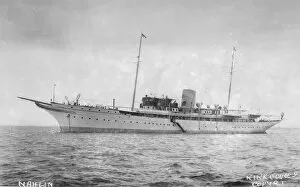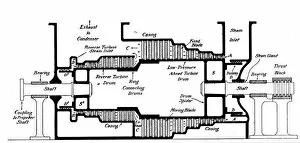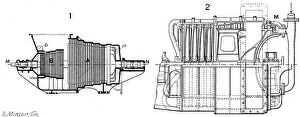Steam Turbine Collection
"The Evolution of Steam Turbines: From Luxury Yachts to Power Stations" The luxury steam yacht Nahlin at anchor, showcasing the early days technology
All Professionally Made to Order for Quick Shipping
"The Evolution of Steam Turbines: From Luxury Yachts to Power Stations" The luxury steam yacht Nahlin at anchor, showcasing the early days technology. (Creator: Kirk & Sons of Cowes) Witness the power behind the Newcastle and District Electric Lighting Company's Station in Newcastle-on-Tyne, England, equipped with cutting-edge Parsons Turbines. (B/W photo) A stunning chromolitho artwork depicting the intricate design and beauty of a Steam Turbine. Step into history at the Heaton Works in Newcastle-on-Tyne, where skilled craftsmen build remarkable Parsons Steam Turbines in their iconic Erecting Shop. (B/W photo) Transport yourself back to London circa 1820 with George Cruikshank's artistic rendition of Locomotion powered by steam - a precursor to future advancements. Meet Sir Charles Algernon Parsons, an Irish engineer who revolutionized steam turbine technology around 1924. Explore the inner workings of a steam turbine fitted into the Dover packet boat Queen through a detailed longitudinal section from c1904. Compare two different longitudinal sections highlighting various designs and configurations employed in steam turbines throughout history. Marvel at how steam turbines transformed transportation as they were seamlessly integrated into the Dover packet boat Queen in 1904. Delve even further back into time with Giovanni Branca's groundbreaking invention - a diagram depicting his revolutionary steam engine from 1629. Experience innovation firsthand through an engraving showcasing Westinghouse-Parsons' collaboration on an advanced and efficient steam turbine system. Return to George Cruikshank's captivating portrayal of Locomotion amidst bustling London streets, illustrating society's fascination with this new mode of transportation circa 1820. From luxurious yachts to powerful stations, these captivating images capture pivotal moments in the development and application of steam turbines – a testament to human ingenuity and the relentless pursuit of progress.























